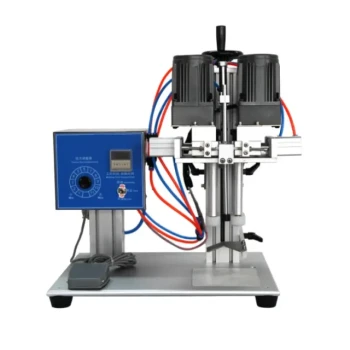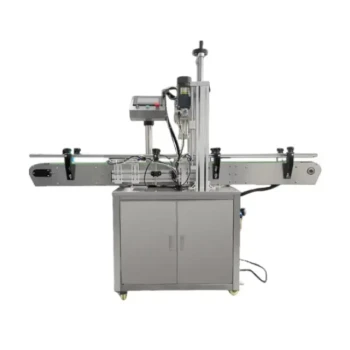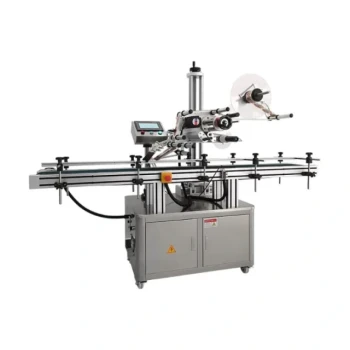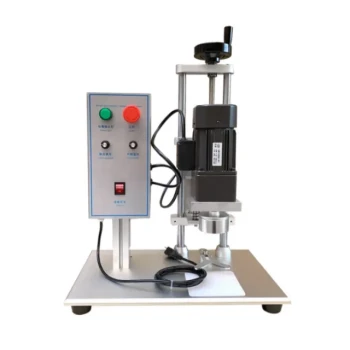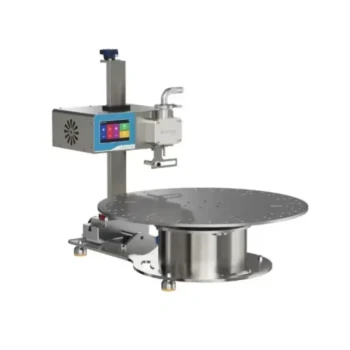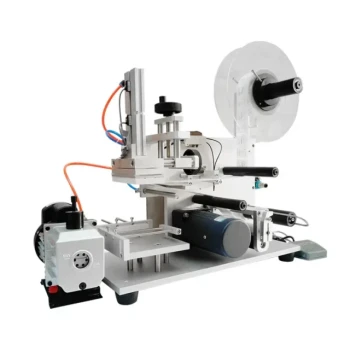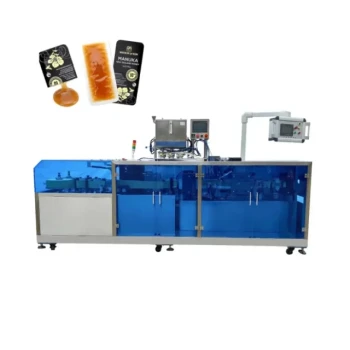At a fundamental level, the key difference between VFFS and HFFS machines is their operational orientation. A Vertical Form Fill Seal (VFFS) machine creates, fills, and seals a package in a vertical motion, using gravity to its advantage. In contrast, a Horizontal Form Fill Seal (HFFS) machine performs these same functions along a horizontal plane.
The choice between them is not about which is superior, but which is fundamentally suited to your product's characteristics. VFFS leverages gravity for simple, loose items, while HFFS offers controlled handling for solid, delicate, or complex products.
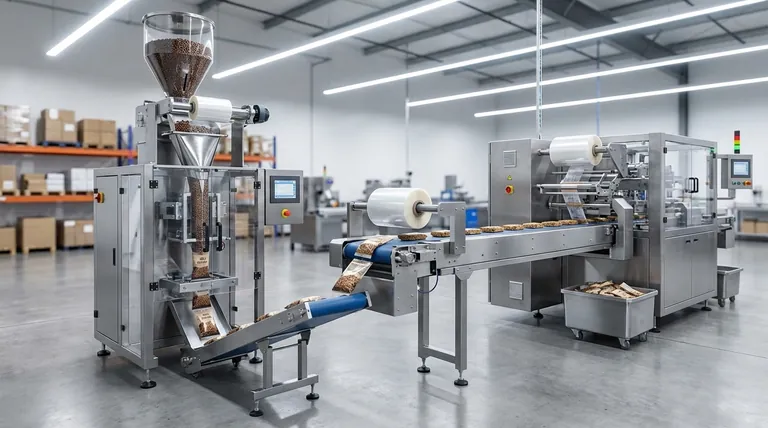
How VFFS Machines Work: The Gravity-Fed Approach
The Core Process
A VFFS machine takes a single roll of packaging film and forms it into a tube around a forming collar. The machine then creates a bottom seal, fills the resulting bag with product from above, and makes the final top seal before cutting the package free.
The Role of Gravity
This entire process is built around gravity. The product is dropped into the bag, making it an incredibly efficient method for items that can flow easily without being damaged.
Ideal Product Types
VFFS technology excels with granulated products, powders, simple liquids, and loose items. Common examples include potato chips, coffee grounds, sugar, snack foods, and certain liquids.
How HFFS Machines Work: The Controlled Conveyor Approach
The Core Process
An HFFS machine also starts with a roll of film but forms it into a pouch that moves horizontally along a conveyor system. The pouch is opened, filled, and then sealed while remaining in this horizontal orientation.
The Advantage of Control
Because the product is not dropped, HFFS machines provide a much more gentle and controlled packaging process. This allows for precise placement and careful handling of items that cannot withstand a fall.
Ideal Product Types
HFFS is the standard for solid, single-item products like candy bars, soap, or baked goods. It is also ideal for delicate items, multi-component kits, or complex liquids and creams that require careful filling.
Understanding the Key Decision Factors
Product Characteristics
This is the most critical factor. If your product is a loose solid or a simple liquid, the VFFS gravity-fed system is highly efficient. If your product is delicate, oddly shaped, or requires precise placement, the HFFS controlled system is necessary.
Package Size and Format
VFFS machines are often used for smaller, single-serve packages like "pillow bags" for chips. HFFS machines are typically better suited for larger bags, stand-up pouches (SUPs), and packages that require a specific shape or orientation.
Required Speed vs. Versatility
For high-volume production of a single, simple product, VFFS machines are often faster. HFFS machines offer greater versatility to handle a wider range of product shapes and sizes, which can be more valuable than pure speed in some operations.
Factory Floor Footprint
Physical space is a practical constraint. VFFS machines are typically taller and have a smaller floor footprint. HFFS machines are longer and require more horizontal space on the production line.
Making the Right Choice for Your Product
- If your primary focus is high-speed packaging of loose items (like snacks, coffee, or powders): A VFFS machine is almost always the more efficient and cost-effective solution.
- If your primary focus is packaging solid or delicate products (like cookies, soap bars, or medical kits): An HFFS machine provides the necessary control and gentle handling.
- If your primary focus is packaging larger formats or stand-up pouches: HFFS technology is generally better equipped to form and handle these more complex bag styles.
- If your primary focus is maximizing production in limited floor space: The smaller, vertical footprint of a VFFS machine is a significant advantage.
Understanding this core operational difference empowers you to select the technology that aligns perfectly with your product's nature and production goals.
Summary Table:
| Feature | VFFS Machine | HFFS Machine |
|---|---|---|
| Orientation | Vertical | Horizontal |
| Primary Advantage | Gravity-fed speed for simple products | Controlled, gentle handling for delicate items |
| Ideal Products | Granules, powders, snacks, loose items | Solid items, baked goods, delicate products, kits |
| Typical Footprint | Taller, smaller floor space | Longer, requires more horizontal space |
Ready to Optimize Your Packaging Line?
Choosing the right machine is critical for your operation's efficiency and product integrity. HONESTBEE supplies robust and reliable VFFS and HFFS packaging machines and beekeeping equipment to commercial apiaries and distributors.
We help you:
- Increase Efficiency: Select the perfect machine for your specific product type and production volume.
- Protect Your Product: Ensure gentle handling and precise packaging to maintain quality.
- Maximize Your ROI: Get expert advice and wholesale-focused pricing on the right equipment for your needs.
Let's discuss your packaging requirements. Contact our experts today to find the ideal solution for your business!
Visual Guide

Related Products
- Professional Durable Customizable Blister Packing Machine
- Pneumatic Paste Filling Machine Bottling Packaging Machine Single Nozzle
- Semi-Automatic Pneumatic Bottle Capping Machine by HONESTBEE
- Fully Automatic Honey Filling Packaging Machine for Processing Line
- Pneumatic Double Nozzle Honey Filling Bottling Packaging Machine
People Also Ask
- How does a pouch filling machine work? A Guide to Automated Pouch Packaging
- How do I choose a packing machine? A Guide to Strategic Investment and Seamless Integration
- How many bags can the packaging machine make per minute? Unlock the Right Speed for Your Production Line
- What is the working principle of bottle packing machine? Achieve Efficient, Automated Filling
- How do I choose a packaging machine? A Systematic Guide to Aligning with Your Production Needs


